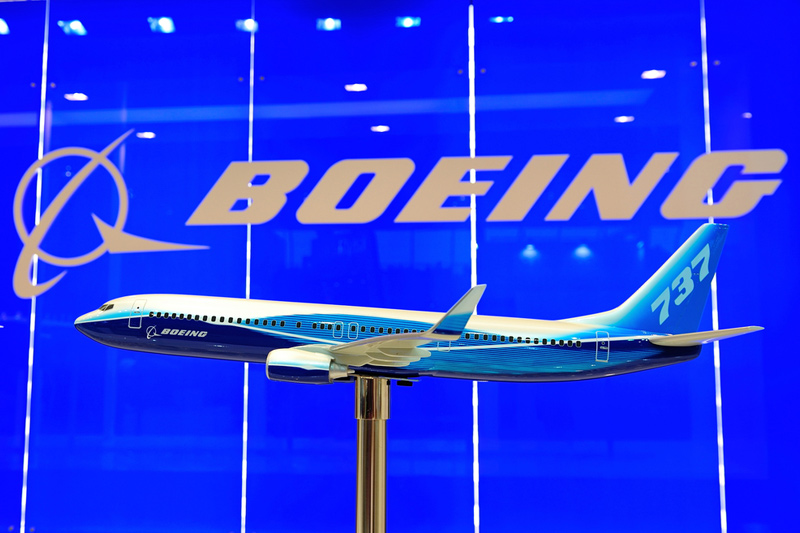TSX higher on employment data
Boeing Co (NYSE:BA) reported significant year-over-year improvements in its second quarter 2025 financial results, with revenue jumping 34% while substantially narrowing its losses. The aerospace giant’s stock rose 2.16% in premarket trading to $241.52 following the July 29 presentation, continuing the positive momentum seen after its better-than-expected first quarter results.
Quarterly Performance Highlights
Boeing reported second quarter revenue of $22.7 billion, a 34.3% increase from $16.9 billion in the same period last year. The company’s operating margin improved to -0.8% from -6.5% a year earlier, while core loss per share narrowed to -$1.24 from -$2.90 in Q2 2024. Free cash flow also showed dramatic improvement at -$0.2 billion compared to -$4.3 billion in the prior year period.
As shown in the following chart of Boeing’s quarterly financial results:
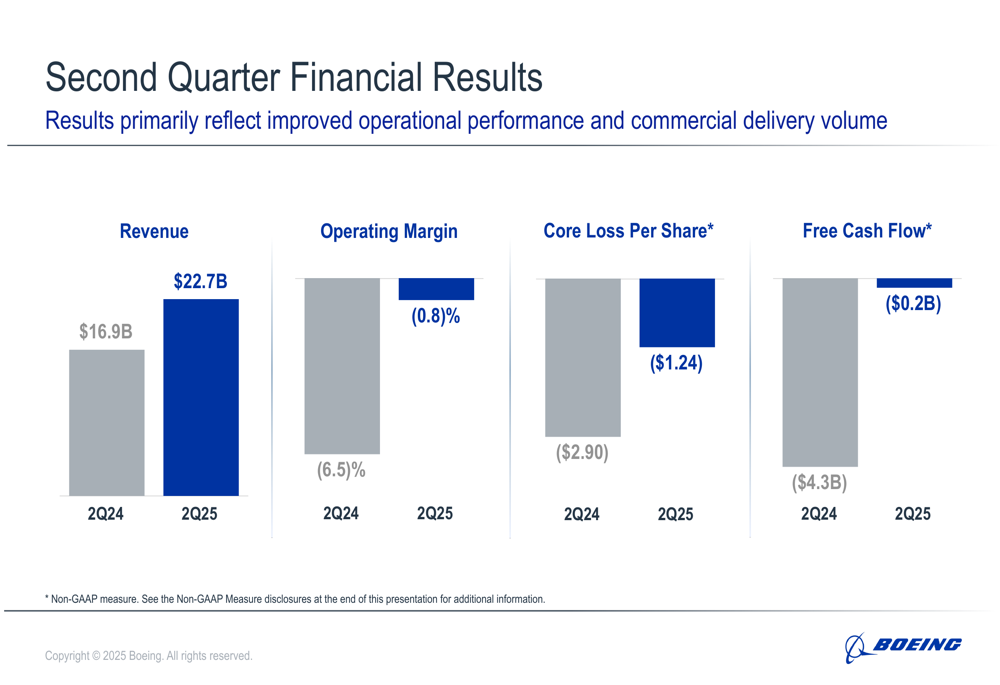
Despite the year-over-year improvements, Boeing’s performance showed some sequential deterioration from Q1 2025, when the company reported a smaller core loss per share of -$0.49. However, the Q2 revenue of $22.7 billion represents a 16.4% increase from Q1’s $19.5 billion, indicating continued business momentum.
Commercial Airplanes Segment
Boeing’s Commercial Airplanes division posted the strongest growth among all segments, with revenue surging 81.7% to $10.9 billion compared to $6.0 billion in Q2 2024. Operating margin improved to -5.1% from -11.9% a year earlier, though the segment remains unprofitable. The company increased 737 production to 38 aircraft per month and maintained 787 production at 7 per month.
The following chart illustrates the Commercial Airplanes segment’s financial performance:
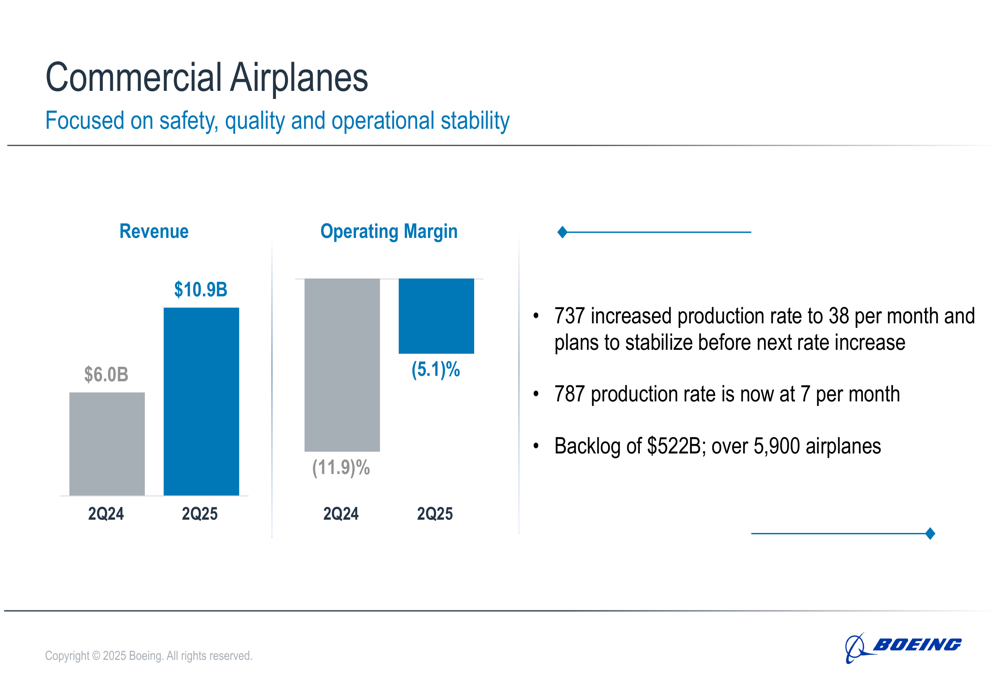
The division’s backlog remains robust at $522 billion, representing over 5,900 aircraft. Management indicated they plan to stabilize current production rates before implementing further increases, suggesting a cautious approach to ramping up manufacturing capacity.
Defense, Space & Security
Boeing’s Defense, Space & Security segment returned to profitability in Q2 2025, posting an operating margin of 1.7% compared to -15.2% in the same period last year. Revenue increased 10% to $6.6 billion from $6.0 billion in Q2 2024. The segment secured new contracts including a U.S. Air Force award to build four T-7A Red Hawk production representative aircraft and began ground testing on the first MQ-25 Stingray for the U.S. Navy.
The segment’s financial performance is illustrated in the following chart:
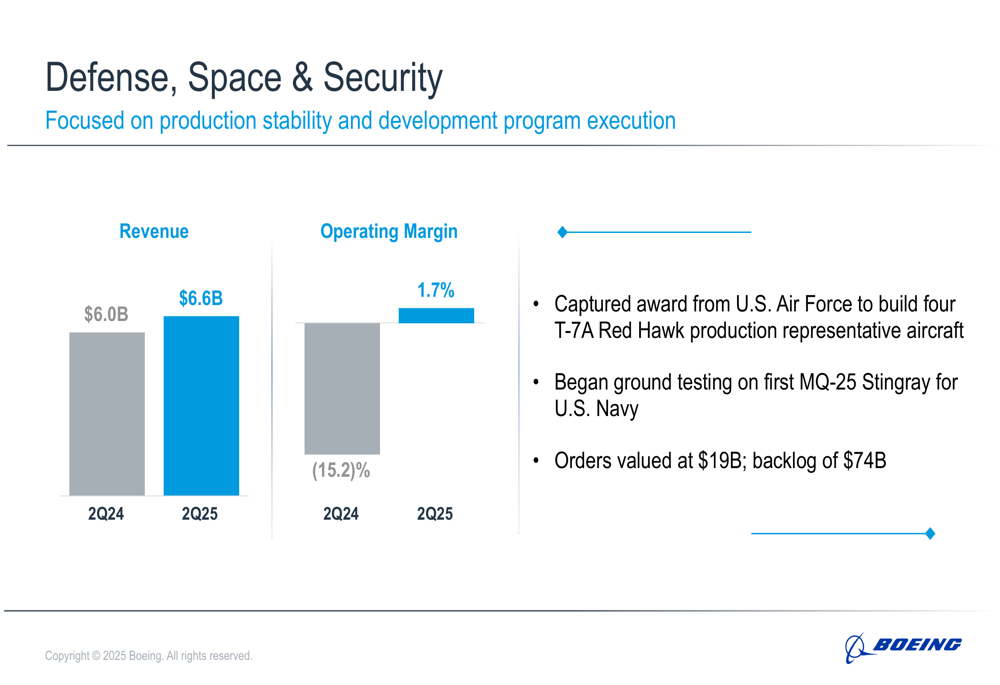
The division reported $19 billion in new orders during the quarter, maintaining a solid backlog of $74 billion. This performance represents a significant turnaround from the substantial losses the segment had been experiencing in previous quarters.
Global Services
Boeing’s Global Services division continued to be the company’s most profitable segment, with revenue increasing 8.2% to $5.3 billion and operating margin improving to 19.9% from 17.8% in Q2 2024. The division completed the sale of its maintenance, repair, and overhaul facility at Gatwick Airport and secured a contract to provide P-8A aircraft training systems to the Republic of Korea Navy.
The following chart shows Global Services’ financial performance:
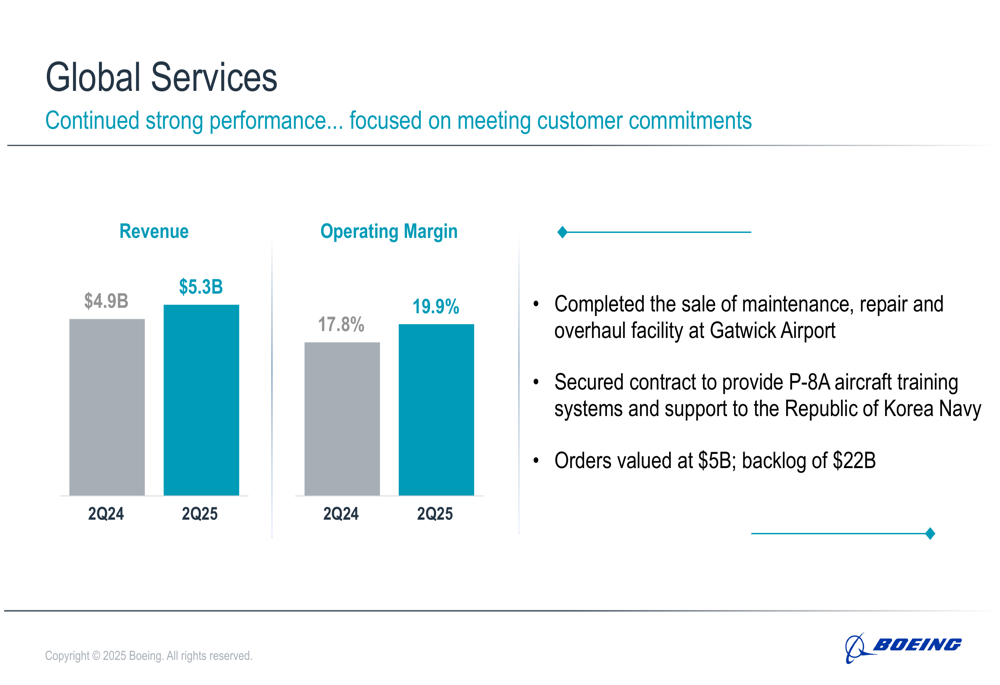
The segment reported $5 billion in new orders during the quarter and maintains a backlog of $22 billion. Global Services continues to provide stability and consistent profitability for Boeing while its other segments work toward recovery.
Financial Position
Boeing maintained a stable financial position with $23.0 billion in cash and marketable securities at the end of Q2 2025, a slight decrease from $23.7 billion at the end of Q1. Consolidated debt stood at $53.3 billion, marginally down from $53.6 billion in the previous quarter. The company’s credit ratings remain at investment grade levels with S&P, Moody’s, and Fitch all rating Boeing at BBB- or equivalent.
The following chart illustrates Boeing’s cash and debt positions:

Free cash flow showed dramatic improvement at -$0.2 billion compared to -$4.3 billion in Q2 2024, reflecting the company’s focus on operational efficiency and cash conservation. This represents a 95.3% year-over-year improvement in cash burn.
Business Strategy and Outlook
Boeing’s presentation emphasized its focus on "stabilizing the business, improving execution, changing culture and building our future." The company appears to be making progress on its recovery journey, though challenges remain, particularly in the Commercial Airplanes segment which continues to operate at a loss.
The following image illustrates Boeing’s business focus areas:
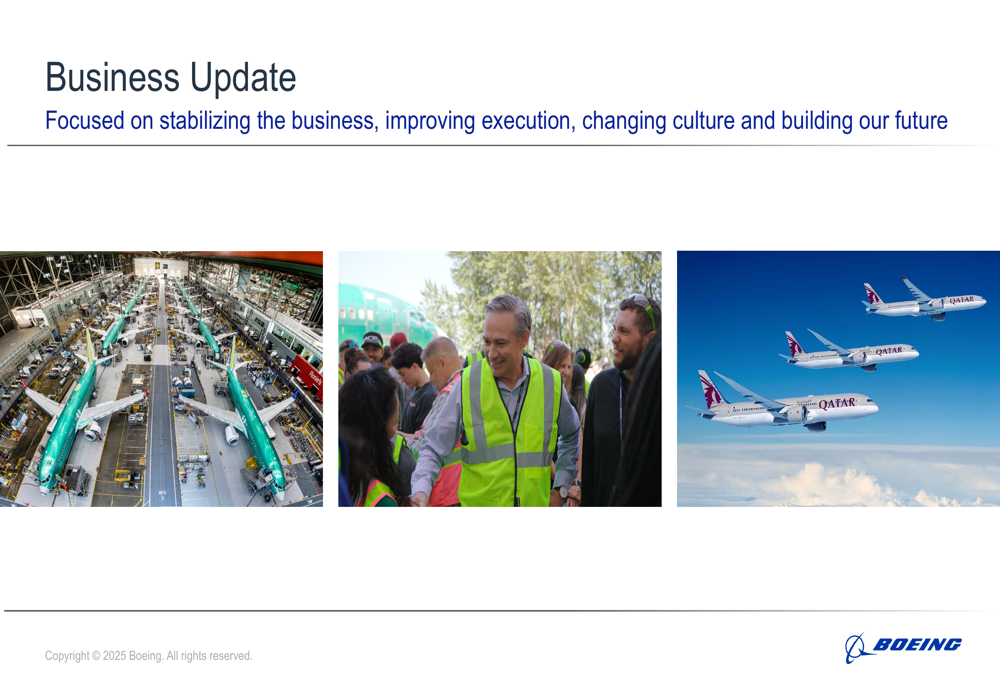
While Boeing did not provide specific forward guidance in the presentation materials, the substantial improvements in operating margins across all segments suggest the company is making progress toward its goal of returning to profitability. The continued growth in revenue and reduction in losses indicate Boeing’s recovery efforts are gaining traction, though the sequential increase in core loss per share from Q1 to Q2 2025 suggests the path may not be linear.
As Boeing approaches its 52-week high stock price, investors appear to be responding positively to the company’s progress in addressing production challenges and improving financial performance. However, the continued losses in the Commercial Airplanes segment and overall negative operating margin indicate that Boeing still has significant work ahead to complete its financial turnaround.
Full presentation:
This article was generated with the support of AI and reviewed by an editor. For more information see our T&C.
